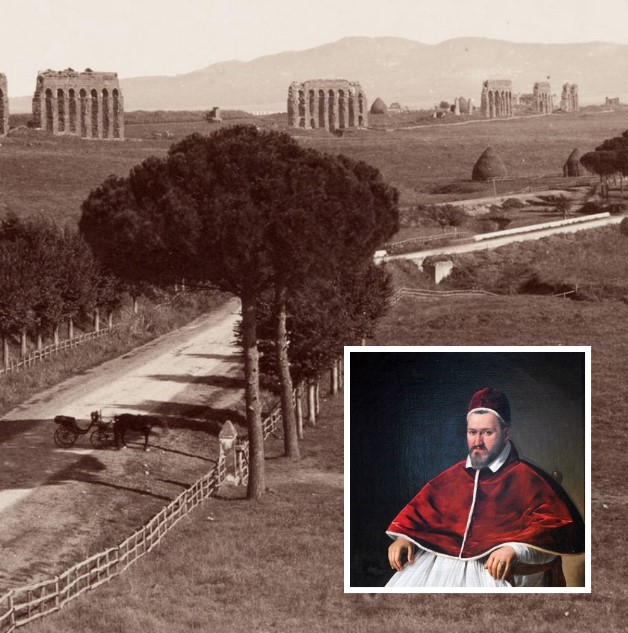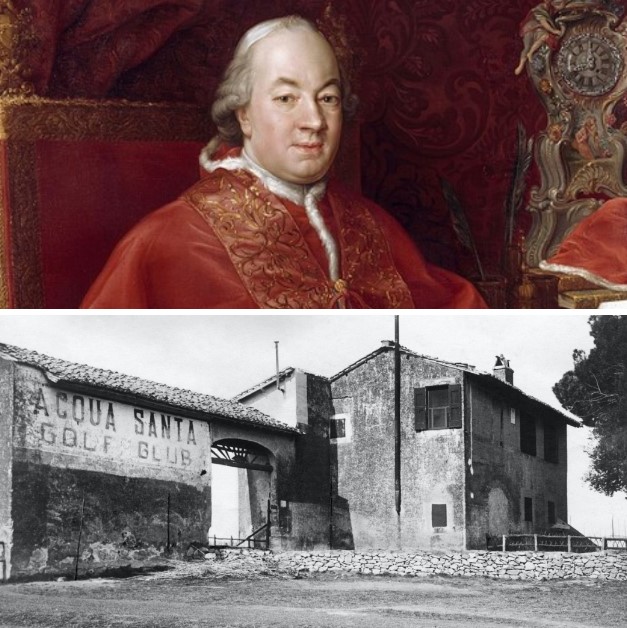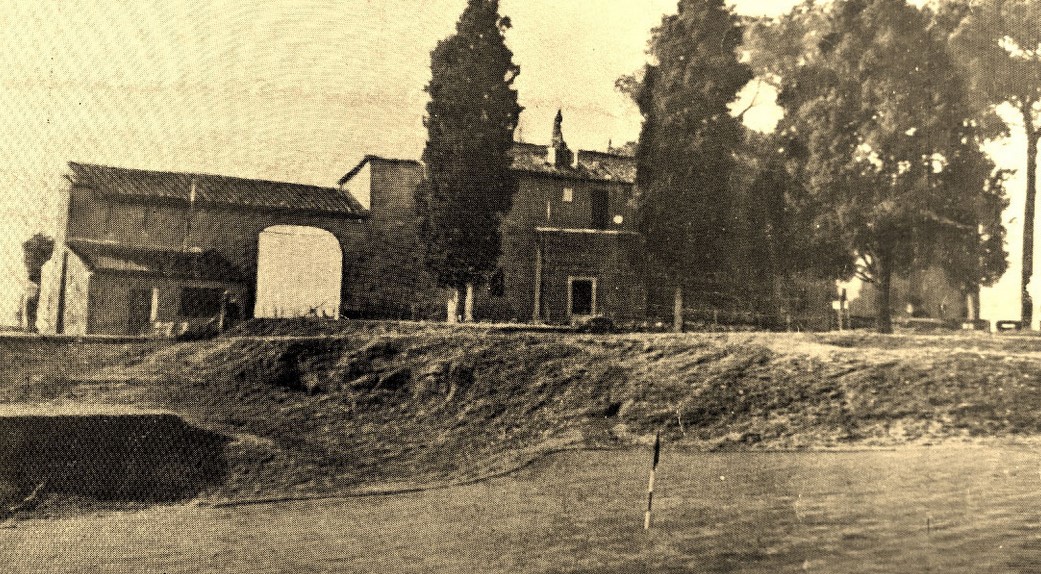Acqua Santa (holy water), The Miraculous Spring of the Popes That Saved the Golf Course During World War II
Rome, Italy
In 1615, a farmer was leading his oxen outside the Porta Appia into the Caffarella Valley to let them drink. The frightened animals suddenly stopped and began snorting. The man went to investigate and discovered a flowing stream of reddish water. He dipped his hands in and noticed that the clear water softened his rough skin. This iron-rich water (hence its red hue), sweet and light, was found to cure skin and urinary ailments. Word spread, and crowds flocked to benefit from its medicinal properties: they drank it mixed with wine and bathed in it during summer for its healing effects. Among those who came was Pope Paul V (1552–1621) who bathed there, and from then on, locals dubbed the water Santa (Holy).

Portrait of Pope Paul V by Caravaggio (1571–1610) and the right side of Via Appia Nuova in the area of the Acqua Santa spring, located in the ditch where the Almone stream flows, in 1888.
In 1779, Pope Pius VI (1717–1799) commissioned the construction of a thermal spa complex, the Bagni dell’Acqua Santa (Baths of Holy Water), which later fell into disuse. This holy water was cherished and consumed by several popes, including Paul V, Alexander VII, Pius VI, and Leo XI. In the 18th century, a building with an adjoining oratory, called the Casino del Papa (Pope’s Lodge), was erected to host pontiffs who visited frequently for treatments.

Portrait of Pope Pius VI (1775) by Giovanni Angelo Braschi (1717–1799) and the ancient thermal buildings of Acquasanta, constructed by the Pope, located to the right of the current Hole 1 of the Rome Golf Club, repurposed as the original Club House.
The underground springs in the area released (and still release) gases and minerals from the volcanic activity of the Castelli Romani, giving the water its pleasant taste. In 1895, Dr. Taussig briefly revived the spa, offering clients a special 25-cent omnibus ticket from Porta San Giovanni, 4 kilometers away, but the venture failed.

Acquasanta Golf Club in the First Half of the 1900s.
In 1903, the Rome Golf Club—the oldest in Italy—relocated to the Acqua Santa estate, owned by the Torlonia princes, on land once occupied by Pius VI’s baths. The site, with its sacred spring, was ideal for a golf course, boasting 360-degree views: the Claudian Aqueduct on one side, the Mausoleum of Cecilia Metella on another, and the distant domes of St. John Lateran and St. Peter’s Basilica on the horizon.
During World War II, much of Rome and the golf course were spared destruction, though some fairways were converted into "war gardens" to grow wheat for the city’s hungry population. On January 22, 1944, after Allied forces landed at Anzio, the Wehrmacht occupied the club and the nearby Acquasanta fort. German troops set up camp along the Almone Valley but notably respected the greens and clubhouse. Allied Spitfires and P-48s also avoided bombing the site. When pilots were later asked why they spared such a visible German outpost, they laughed: “We’d have to be crazy to destroy the only 18-hole golf course south of Florence!”
Thus, Acqua Santa’s legacy endured—a miraculous blend of sacred history, healing waters, and an unexpected wartime sanctuary.
Rome, via Appia Nuova 716/a
